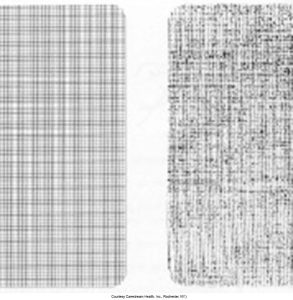17.1
Quality assurance refers to special procedures that are used to ensure the production of high-quality diagnostic images. Although the dentist is responsible for ensuring that these things are done, the tasks themselves are typically left to the radiographers.
Quality Assurance Tests
Specific tests used to maintain and monitor quality assurance are dental x-ray equipment and supplies, film processing, and digital imaging equipment. To avoid excess exposure of patients and personnel to x-radiation, the dental radiographer must have a clear understanding of the quality control procedures used to text x-ray units, supplies, film processing, and digital imaging equipment in the dental office.
In the Iannucci & Howerton, Dental Radiography Principles & Techniques, 6th Edition textbook on page 156, refer to box 17-2.
Equipment and Supplies
Quality control tests are necessary to monitor all dental x-ray machines, film, screens and c cassettes, and viewing equipment. Everything must be in good working order to produce a diagnostic image.
The equipment and supplies required for quality control are:
- Dental x-ray machines
- Dental x-ray film
- Screens and cassettes
- Viewing equipment
Dental X-Ray Machines
All dental x-ray machines must be inspected and monitored periodically and must be calibrated at regular intervals. Dental x-ray machines should be tested for minor malfunctions, output variations, colimation problems, tubehead drift, timing errors and inaccurate kilovoltage and milliamperage readings. All of this should be performed once a year by a qualified technician, and the images exposed annually with fixed settings on a phantom head may be reviewed side-by-side to reveal discrepancies.
Dental X-Ray Film
A fresh film test should be done for each box, and it should always be checked for freshness before it is used. To prepare the film, it must be an unwrapped and an unexposed film from a newly opened box. Fresh chemicals are used to process the unexposed film. And the results should be done on fresh film and the processed film should appear clear with a slight blue tint. If the processed film is fogged, it may be expired, improperly stored, or exposed to radiation.
Screens and Cassettes
Screens are extraoral intensifying screens that should be examined for dirt or scratches; screens should also be cleaned monthly and cassette holders are used to examine for worn closures, light leaks, and warping.
Here are the following steps for a film-screen contact test :
- Insert film in the cassette holder
- Place a wire mesh test object on top of the loaded cassette
- Position PID with a 40-inch target-film distance
- Expose the film using 10 mA, 70 kVp, and 15 impulses
- Process the exposed film
- View the film on a view box in a dimly lit room at a distance of 6 feet
The exposed film will either be of adequate contact or inadequate contact, depending upon the density that is exhibited. Below are images of screen-film contact. On the left is a cassette exhibiting good film-screen contact, and on the right, a cassette exhibiting poor film-screen contact.

In the Iannucci & Howerton, Dental Radiography Principles & Techniques, 6th Edition textbook on page 156, refer to Figure 17-1.
Practice Makes Perfect
Viewing Equipment
A view box is a light source used to view processed films, also referred to as an illuminator or lightbox. Below is an image displaying examples of view boxes in different sizes to accommodate most dental viewing needs.

Media Attributions
- Iannucci & Howerton, Dental Radiography Principles & Techniques, 6th Edition Chapter 17, CC BY-NC-ND

